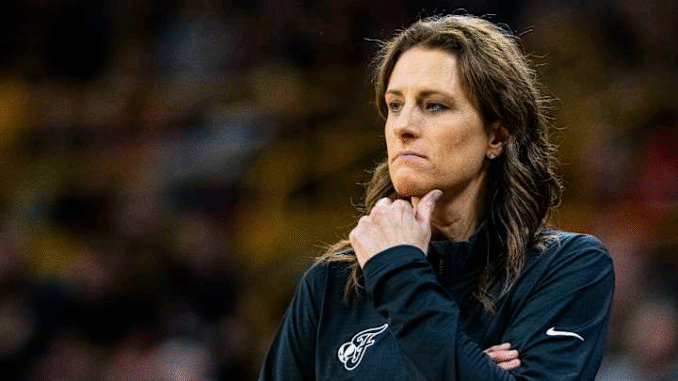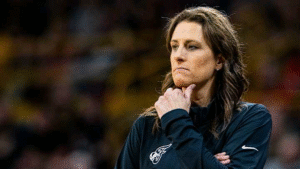
An Emotional Decision: The Exit of DeWanna Bonner from the Indiana Fever
In an unexpected mid‑season development, the Indiana Fever officially released veteran star DeWanna Bonner on June 25. The announcement came amid speculation that Bonner’s recent two-week absence from team activities was tied to “personal reasons.” As more details emerged, it became clear that Bonner’s unease with how she fit into the team’s dynamics—after signing a free-agent deal with Indiana in the previous offseason—was the underlying cause of her departure.

A Mutual Decision Born from Discomfort
The Fever’s leadership confirmed that Bonner had requested to part ways with the organization. Although the team granted her wish, the move followed a period of silence and uncertainty that left many fans and teammates genuinely surprised. It now appears her discomfort with how she meshed—both on and off the court—was too deep to ignore.
When a seasoned star like Bonner requests an exit, it’s never a decision taken lightly. Negotiations and conversations between her and the Fever’s management undoubtedly played out behind closed doors. Eventually, both sides reached an agreement: Bonner would have her roster spot waived, allowing her the freedom to breathe and find a team where she could thrive.
Stephanie White Opens Up
Fever head coach Stephanie White, who had previously coached Bonner during her time at the Connecticut Sun, spoke candidly about the parting during a Thursday media session. White’s remarks were filled with sincerity—acknowledging disappointment while also expressing concern for Bonner’s wellbeing.
> “Obviously, we’re disappointed that things didn’t work out,” White said, referencing footage shared via the Fever’s official YouTube channel. “But I love DB. She’s someone I greatly respect—a Hall of Famer. While I’m disappointed, my main priority has always been her happiness.”
White had a long-standing connection with Bonner from their two seasons together in Connecticut. Their history made the separation all the more emotional. Despite her own team’s loss, White commended Bonner’s courage in making the tough decision.
When Things Don’t Click
White delved deeper into the dynamics at play, summarizing how player-team mismatches can happen in professional sports. “Sometimes things click, and sometimes they don’t,” she explained. “That’s just how it goes.”
The emotional tone of her comments was palpable. It was clear that she wasn’t just speaking as a coach, but also as someone who had grown close to Bonner as a mentor and friend. White admitted there was “a lot” of complexity involved when trying to create the right chemistry on a team, and ultimately, things “didn’t work the way we wanted them to.”
> “At the end of the day, my priority is that she’s happy,” White emphasized. “And when things don’t work out, other factors come into play. I’m disappointed, but I love her and want the best for her.”
A Coach’s Grace Under Pressure
Even as she voiced her disappointment, White’s tone remained unwaveringly supportive. She took what could have been a contentious moment and turned it into a display of leadership and compassion.
The world of professional sports often demands that coaches maintain a tough exterior—but White’s candidness reveals another side: one that values integrity and the human side of athletics. In acknowledging both the emotional pain of a lost teammate and the importance of player wellness, she managed to walk the fine line between accountability and empathy.
The Ripple Effects
Bonner’s departure created an immediate void within the Fever lineup. Known for her all-court versatility and veteran leadership, Bonner’s absence is poised to impact both the team’s on-court production and its locker room camaraderie.
Offensively, Bonner’s scoring versatility—from both inside the paint and beyond the arc—will be missed. Defensively, her experience and floor-setting skills provided a stabilizing presence. Her exit puts added pressure on remaining frontcourt players to step up and fill the gap.
From a team‑chemistry standpoint, veteran players often serve as emotional anchors. Bonner’s leadership likely played a role in mentoring younger teammates. That dynamic now shifts, leaving a combination of opportunity and new responsibilities for the rest of the squad.
A Wider Perspective: The Difficulty of Transitions
Bonner’s situation serves as a high-profile example of the perils of off-season signings. Free agency can bring instant buzz—new faces, fresh talent, promising potential. Yet it can also lead to uneasy transitions when personalities and expectations don’t align.
Both coaches and general managers face difficult decisions in these situations. The Fever must now reassess their roster strategy, whether they hope to bring in another veteran presence or place greater trust in existing players.
Bonner’s Next Chapter: What’s Ahead?
Now a waived player, Bonner has full freedom to choose her next destination. As a proven talent and accomplished veteran, she is certain to draw interest from championship contenders in need of experience and scoring depth.
Minimally, Bonner will hope to join a team that maximizes her strengths and enables her to rediscover joy in the game.
Final Thoughts
The dissolution of Bonner’s time with the Fever is not just a roster move—it’s a narrative about the intersection of professional aspirations and personal fulfillment. For a coach like White, it’s about balancing disappointment with compassion. For Bonner, it’s about finding the right fit—even if it means walking away.
White’s comments offer a blueprint: stay honest, stay respectful, and always put people before points. That outlook may resonate far beyond the hardwood.
Leave a Reply